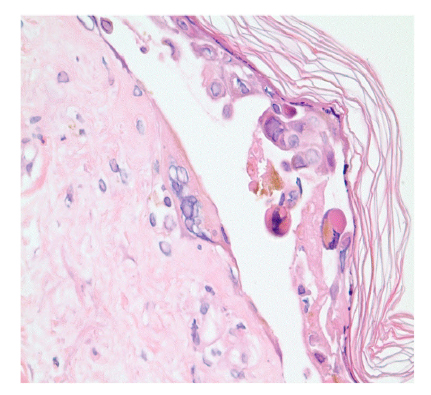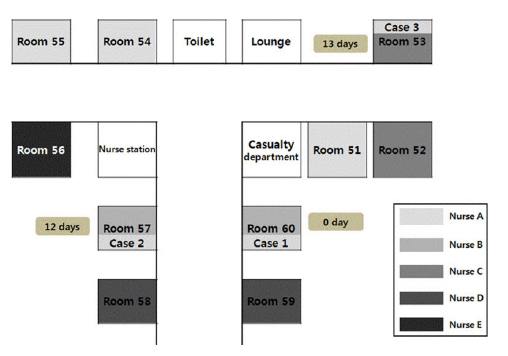Korean J healthc assoc Infect Control Prev.
2019 Dec;24(2):103-107. 10.14192/kjicp.2019.24.2.103.
Two Cases of Chickenpox Developed from an Immunocompromised Patient with Localized Herpes Zoster
- Affiliations
-
- 1Department of Infectious Disease, Ajou University School of Medicine, Suwon, Korea.
- 2Department of Internal Medicine, Yonsei University College of Medicine, Seoul, Korea. shhan@yuhs.ac
- 3Infection Control Department, Severance Hospital, Seoul, Korea.
- 4Department of Laboratory Medicine, Yonsei University College of Medicine, Seoul, Korea.
- KMID: 2467910
- DOI: http://doi.org/10.14192/kjicp.2019.24.2.103
Abstract
- Varicella zoster virus causes chickenpox, which is highly contagious, at primary infection and herpes zoster at reactivation. The varicella zoster virus may be more contagious and cause serious outbreaks in immunocompromised patients. There are some reports of outbreaks of chickenpox in patients with herpes zoster. Here, we describe a case of localized herpes zoster occurring in an immunocompromised patient during hospitalization in a specialized ward for immunocompromised patients. This episode resulted in two newly developed, hospital-acquired cases of chickenpox. If we had isolated the index patient who had localized herpes zoster immediately, the two cases of chickenpox could have been prevented. Therefore, patients with localized herpes zoster should be isolated in wards with immunocompromised patients.
Keyword
MeSH Terms
Figure
Reference
-
1. Cohen JI, Straus SE, Arvin AM. Varicella-Zoster Virus replication, pthogenesis and management. In : Fields BN, Knipe DM, Howley PM, editors. Fields' virology. 5th ed. Philadelphia: Lippincott Williams & Wilkins;2007. p. 2773–2818.2. Juel-Jensen BE. Outbreak of chickenpox from a patient with immunosuppressed herpes zoster in hospital. Br Med J (Clin Res Ed). 1983; 286:60.
Article3. Saidel-Odes L, Borer A, Riesenberg K, Frenkel A, Sherlis R, Bouhnick L, et al. An outbreak of varicella in staff nurses exposed to a patient with localized herpes zoster. Scand J Infect Dis. 2010; 42:620–622.
Article4. LaRussa P. Clinical manifestations of varicella. In : Arvin AM, Gershon AA, editors. Varicella-zoster virus : virology and clinical management. Cambridge: Cambridge University Press;2000. p. 206–219.5. Krah DL. Assays for antibodies to varicella-zoster virus. Infect Dis Clin North Am. 1996; 10:507–527.
Article6. Marin M, Güris D, Chaves SS, Schmid S, Seward JF. Advisory Committee on Immunization Practices, Centers for Disease Control and Prevention (CDC). Prevention of varicella: recommendations of the Advisory Committee on Immunization Practices (ACIP). MMWR Recomm Rep. 2007; 56(RR-4):1–40.7. Arbeter AM, Starr SE, Plotkin SA. Varicella vaccine studies in healthy children and adults. Pediatrics. 1986; 78(4 Pt 2):748–756.8. Huang YC, Lin TY, Chiu CH. Acyclovir prophylaxis of varicella after household exposure. Pediatr Infect Dis J. 1995; 14:152–154.
- Full Text Links
- Actions
-
Cited
- CITED
-
- Close
- Share
- Similar articles
-
- Two Cases of Herpes Zoster in healthy Children after Varicella Vaccination
- Two cases of Herpes Zoster Causing Neuropathic Bladder
- Intractable Herpes Zoster Pain in a Patient Infected with Human Immunodeficiency Virus: A case report
- A Case of Herpes Zoster Duplex Bilateralis, a Diagnostic Clue of Human Immunodeficiency Virus Infection
- Clinical Features of Herpes Zoster in Children according to Immune Status



